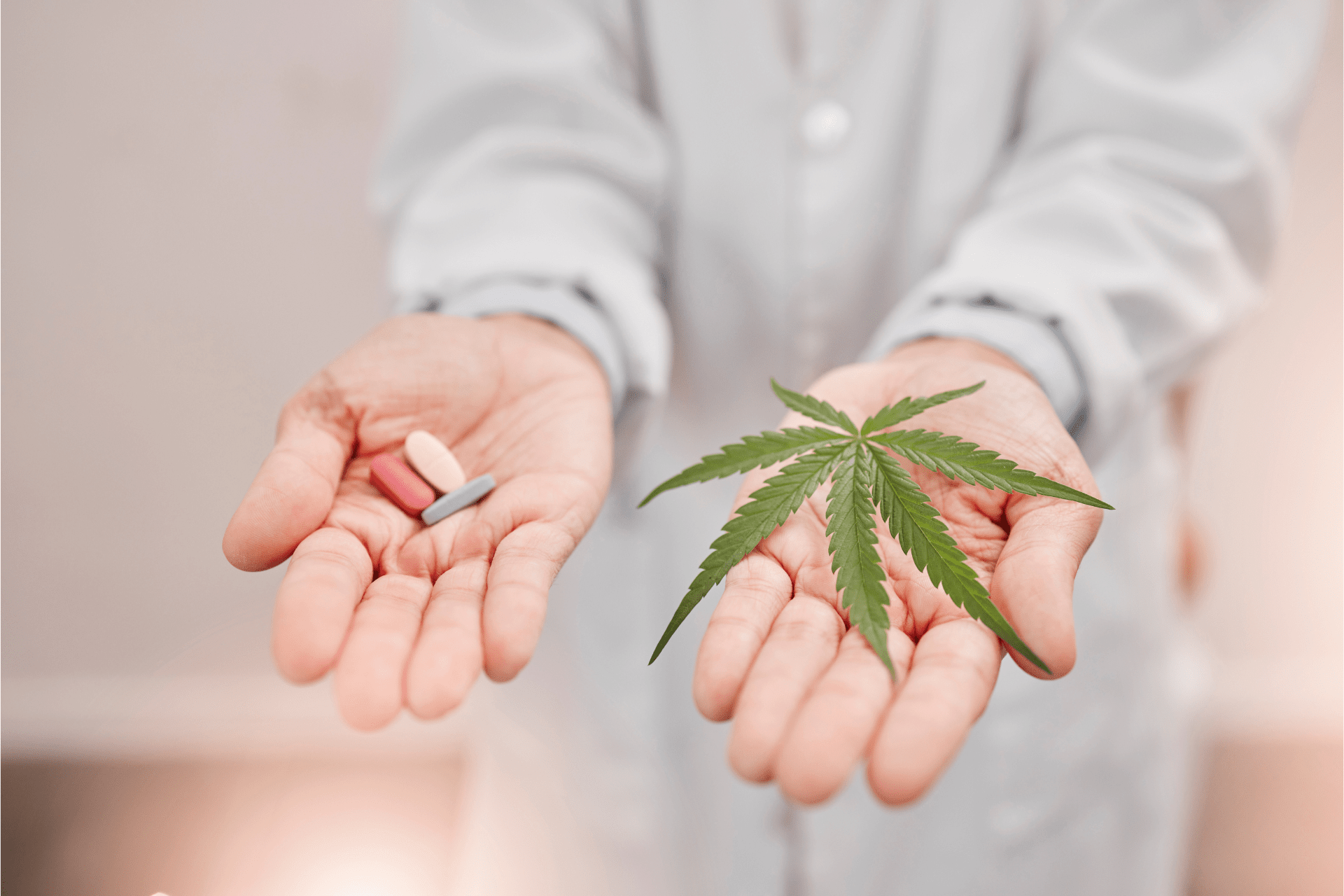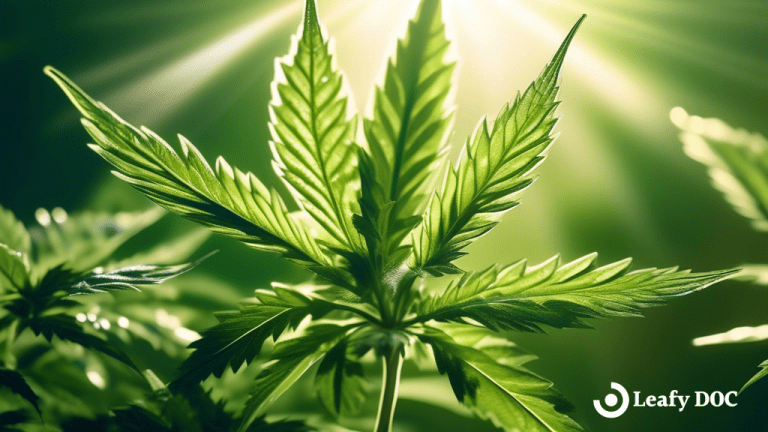Has Medical Marijuana Impacted the Opioid Epidemic?
by Haley Mills · April 10, 2023
Discover the impact of medical marijuana on the opioid epidemic and how it can be used as an alternative to traditional pain medications. Learn about the potential benefits of using cannabis for opioid addiction.

In recent years, the opioid epidemic has ravaged communities across the United States, leaving a trail of devastation. As the country grapples with this public health crisis, the search for viable alternatives to traditional pain management has become a pressing concern. With the increased legalization and acceptance of medical marijuana, many have turned their attention to this once-controversial plant as a possible solution.
In this article, we will delve into the complex relationship between medical marijuana and the opioid epidemic, exploring the evidence of its impact, the challenges that remain, and the potential for cannabis to help combat this devastating crisis. Join us as we examine the intricacies of this timely and vital issue, and consider the implications for the future of pain management and addiction treatment.
History of Use
Regarding pain management and relief, two substances have a long and intertwined history: cannabis and opioids. As we explore the historical context of these two potent agents, we’ll closely examine how humans have utilized and relied on them over the centuries. From ancient civilizations to modern societies, there has been a complex relationship between these two substances and how their chronic pain management roles have evolved.
Cannabis
Medicinal cannabis use has a rich history that dates back thousands of years, with ancient civilizations recognizing its therapeutic potential. The earliest evidence of cannabis use for medicinal purposes can be traced to 2,700 BCE in ancient China, where it was employed to treat various ailments, including pain, rheumatism, and malaria. Over time, its use spread to other regions, such as India, where it was incorporated into traditional Ayurvedic medicine. In ancient Greece and Rome, cannabis alleviated pain from various conditions, including toothaches and earaches.
The popularity of medicinal cannabis continued through the medieval period in the Islamic world, where it was used to treat epilepsy, inflammation, and pain. In the 19th century, cannabis-based medicines gained traction in Western medicine, with physicians prescribing them for various conditions, from migraines to menstrual cramps. However, the 20th century saw a shift in attitudes toward the prohibition of cannabis in many parts of the world, which significantly limited its medicinal use and research.
Opioids
Opioid use throughout history also has a storied past, with its origins dating back to the cultivation of the opium poppy around 3,400 BCE in Mesopotamia. Opium, derived from the plant’s seed pods, was used for its pain-relieving and sedative properties by various ancient civilizations, including the Egyptians, Greeks, and Romans. The active components of opium, such as morphine and codeine, were isolated in the early 19th century, leading to the development of more potent pain-relieving medications.
In the 20th century, synthesizing semi-synthetic opioids, such as oxycodone and hydrocodone, expanded the range of available opioid painkillers. However, alongside the legitimate medical use of opioids, a darker side began to emerge, with increasing instances of addiction and overdose. Despite their long history of use, it is the more recent trends in opioid prescription and misuse that have culminated in the current opioid epidemic, demonstrating the need for more cautious and responsible approaches to pain management.
What led to the current opioid epidemic?
The current opioid epidemic has its roots in several converging factors, leading to a widespread and devastating public health crisis. One of the key drivers can be traced back to the late 20th century when pharmaceutical companies began aggressively marketing opioid pain relievers as safe and effective treatments for chronic pain. Assuring the medical community that the risk of addiction was minimal, these companies played a significant role in shaping the perception of opioids in the minds of both physicians and patients.
Consequently, the prescription of opioids for various types of pain skyrocketed, and as their use became more prevalent, so too did rates of addiction and overdose. The widespread availability of these potent painkillers led to an increase in the non-medical use of prescription opioids, often resulting in addiction. The situation was further exacerbated as people became addicted to prescription opioids and turned to cheaper, more accessible alternatives, such as heroin and illicitly manufactured fentanyl.
Another contributing factor to the opioid epidemic was insufficient education and training for healthcare professionals in pain management and addiction. This, coupled with a strong emphasis on patient satisfaction and the aggressive marketing tactics of pharmaceutical companies, led to a perfect storm that fueled the crisis.
Current Epidemic Statistics
These staggering statistics demonstrate that the opioid epidemic has become a global public health emergency, devastatingly impacting the United States. Addressing this crisis requires a multifaceted approach that includes reevaluating pain management strategies, improving access to addiction treatment, and implementing comprehensive prevention efforts.
United States
- In 2019, nearly 50,000 people in the United States died from opioid-involved overdoses.
- The number of opioid prescriptions dispensed by US pharmacies increased from 76 million in 1991 to 207 million in 2013.
- Approximately 21-29% of patients are prescribed opioids for chronic pain misuse.
- An estimated 4-6% of people who misuse prescription opioids transition to heroin.
- Opioid overdoses increased by about 30% across the US between July 2016 and September 2017.
Worldwide
- According to the United Nations, opioids accounted for 66% of the 167,000 global drug-related deaths in 2017.
- It is estimated that 53 million people worldwide used opioids in 2018, an increase of 56% from 2016.
- In 2017, around 27 million people worldwide suffered from opioid use disorders.
- The economic impact of the global opioid crisis is estimated to be over $1 trillion per year, considering healthcare, social, and criminal justice costs, as well as lost productivity.
Can medical marijuana help with the crisis?
Medicinal weed has shown promise as a potential tool in combating the opioid crisis and aiding in recovery through several fundamental mechanisms:
- Alternative to prescribing opioids for pain management: One of the most significant ways medical cannabis can help combat the crisis is by serving as an alternative treatment for pain management rather than a prescription opioid. Cannabis effectively manages different types of pain, including chronic neuropathic pain and inflammatory or cancer-related pain. By providing a safer, non-opioid option for pain relief, medical cannabis can potentially reduce the number of opioid prescriptions, subsequently decreasing the risk of addiction and overdose.
- Reduction of opioid withdrawal symptoms: Medical cannabis may also assist in recovery by alleviating some withdrawal symptoms associated with opioids. Cannabis has been shown to help alleviate symptoms such as nausea, vomiting, anxiety, and insomnia, which are common during opioid withdrawal. By easing these symptoms, medical cannabis can make recovery more manageable for individuals seeking to overcome opioid addiction.
- Synergistic effect with opioids: Studies have suggested that the combined use of medical cannabis and opioids may produce a synergistic effect, allowing for lower doses of opioids to be administered while maintaining effective pain relief. This could potentially reduce the risk of developing tolerance, dependence, and addiction to opioids, as well as minimize the likelihood of overdose.
- Reduction of cravings: Preliminary research has indicated that medical cannabis might help reduce cravings for opioids in individuals who are in recovery. By modulating the brain’s reward system, cannabinoids such as THC and CBD may help to decrease the desire for opioids, thus supporting long-term recovery and reducing the risk of relapse.
- Improved mental health support: Many individuals struggling with opioid addiction also suffer from co-occurring mental health disorders. Medical cannabis has demonstrated the potential to alleviate symptoms of various mental health conditions, such as anxiety, depression, and PTSD. Addressing these underlying mental health issues, medical cannabis may further support recovery and well-being, leading to fewer opioid overdose deaths.
Risks of Cannabis Use and Opioid Addiction
While medical marijuana may offer potential benefits in the context of opioid addiction treatment, it is essential to recognize that there are also associated risks. Some of these risks include:
- Dependence and addiction: Though the risk of developing dependence or addiction to cannabis is generally considered lower than that of opioids, it is not nonexistent. Chronic use of cannabis may lead to Cannabis Use Disorder, which can negatively impact an individual’s personal and professional life, similar to opioid use disorder.
- Cognitive impairment: Per the Centers for Disease Control and Prevention (CDC), Cannabis use, especially with high levels of THC, can cause short-term cognitive impairment, affecting memory, attention, and decision-making. These effects could hinder an individual’s ability to fully engage in treatment programs, therapy sessions, or other activities that require a clear and focused mind.
- Mental health concerns: In some individuals, cannabis use may exacerbate underlying mental health issues or trigger new ones, such as anxiety, depression, or psychosis. This could complicate the recovery process, as addressing mental health is often a critical component of addiction treatment.
- Potential drug interactions: As with any medication, there may be potential interactions between cannabis and other opioid medications used in addiction treatment, such as methadone or buprenorphine. These interactions could lead to unexpected side effects or alter the effectiveness of the prescription drugs.
- Limited research: While there is a growing body of evidence supporting the potential benefits of medical cannabis for opioid addiction treatment, more research is needed to understand its effectiveness, risks, and long-term implications fully. Current studies may have limitations or be based on small sample sizes, making it difficult to draw definitive conclusions.
- Legal and social challenges: The legal status of marijuana and medical cannabis laws varies widely across countries and states, which may create barriers to its use in opioid addiction treatment. Additionally, the social stigma surrounding cannabis use could further complicate the recovery process for some individuals.
It is essential for healthcare providers and patients to carefully weigh the potential benefits and risks of using medical cannabis for opioid addiction treatment. A personalized approach that considers an individual’s specific needs and circumstances, along with evidence-based therapies, is crucial for effective treatment and recovery.
Scientific Reviews: Medical Marijuana and Opioids
Medical cannabis for the reduction of opioid dosage in the treatment of non-cancer chronic pain: a systematic review
Objective: This review aimed to assess if medical cannabis (MC) combined with opioids for non-cancer chronic pain management would reduce the opioid dosage.
Methods: Four databases and grey literature were searched to identify original research assessing the effects of MC on non-cancer chronic pain in humans. The study included various study designs and followed PRISMA guidelines for reporting. Cochrane’s ROBINS-I and AXIS tools were used for risk of bias assessment.
Results: The review included nine studies with 7222 participants. There was a 64-75% reduction in opioid dosage combined with MC. Opioid substitution with MC was reported by 32-59.3% of patients with non-cancer chronic pain. One study reported a slight decrease in hospital admissions and emergency department visits for patients receiving MC as an adjunct to opioids. However, all included studies had a high risk of bias, primarily due to their methods.
Conclusions: The review found a likelihood of reducing opioid dosage when combined with MC, but a causal inference cannot be made. The evidence from this review cannot be relied upon to promote MC as an adjunct to opioids for treating non-cancer chronic pain patients. The optimal MC dosage for achieving opioid dosage reduction remains unknown. More research is needed to determine if using MC combined with opioids is associated with unknown health consequences.
In summary, this systematic review suggests that medical cannabis may potentially reduce opioid dosage in treating chronic non-cancer pain. However, the high risk of bias in the included studies and the lack of information on optimal MC dosage limit the strength of the conclusions. Further research is needed to establish causality and investigate potential health consequences.
Cannabis as a Substitute for Opioid-Based Pain Medication: Patient Self-Report
Objective: This study aimed to examine cannabis as a substitute for opioid-based pain medication by collecting survey data from medical cannabis patients.
Methods: The study collected survey data from 2897 medical cannabis patients. Respondents reported their experiences with using cannabis as a substitute for opioid-based pain medication, including the effectiveness of cannabis for pain relief and the impact of cannabis use on their consumption of opioid-based medications.
Results: Thirty-four percent of the sample reported using opioid-based pain medication in the past six months. Respondents reported that cannabis provided relief on par with their other medications but without unwanted side effects. Ninety-seven percent of the sample “strongly agreed/agreed” that they could decrease the opiates they consume when they also use cannabis, and 81% “strongly agreed/agreed” that taking cannabis alone was more effective at treating their condition than taking cannabis with opioids. Results were similar for those using cannabis with non-opioid-based pain medications.
Conclusion: The study suggests that cannabis may serve as an adequate substitute for opioid-based pain medication, with the potential to decrease opiate consumption and provide relief without unwanted side effects. The authors recommend future research to track clinical outcomes where cannabis is a viable substitute for pain treatment and examine the outcomes of using cannabis as a medication-assisted treatment for opioid dependence.
In summary, this study provides evidence from patient self-report that cannabis may be an adequate substitute for opioid-based pain medications, reducing dependence and side effects. However, it is essential to note that the study relies on self-reported data, which can be subject to recall bias and other limitations. Further research, including clinical trials, is needed to validate these findings and explore the potential of cannabis as an alternative pain treatment option.
Final Thoughts on MMJ & The Opioid Crisis
The impact of medical marijuana on the opioid epidemic is multifaceted and evolving. While evidence suggests that cannabis may offer a safer alternative for pain management and potentially reduce opioid prescription rates, it is crucial to acknowledge that it is not a one-size-fits-all solution. Continued research, education, and policy changes are necessary to fully understand the implications and potential benefits of medical marijuana in addressing the opioid crisis.
Moving forward, we must maintain an open dialogue and collaborate across disciplines to develop comprehensive strategies that not only focus on medical marijuana but also address the root causes of addiction, improve access to mental health services, and prioritize the well-being of those affected by this epidemic. Ultimately, only through a multifaceted approach can we hope to mitigate the devastating impact of the opioid crisis and pave the way for a healthier future with fewer opioid-related deaths.
Last Updated: August 8, 2024
Get Approved for Your Medical Marijuana Card in Minutes!

Get Your Medical Card
Connect with a licensed physician online in minutes

Like This Article?
Share with your friends
Table of Contents
Keep Reading
-
3 Steps on How to Get Medical Marijuanas Card in MA Online
Learn the steps to obtain your medical marijuana card in MA easily online.
-
Unlocking Creativity With Terpenes In Cannabis
Unleash Your Inner Artist: Uncover the Power of Terpenes in Cannabis for Unlocked Creativity. Learn How to Ignite Imagination and Boost Inspiration Today!
-
Relieving Stress With CBD For Wellness
Relieve Stress and Improve Wellness with CBD – Start Your Journey to a Stress-Free Life Today! Discover the Benefits of CBD for Stress Relief and Take Control of Your Wellbeing. Click Now to Learn More!



